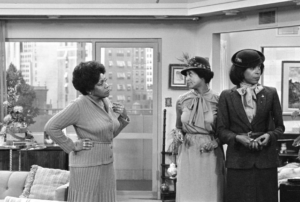The Quiet Feminism of Norman Lear’s Middle-Aged Women

Originally published by Rhonda Garelick for the New York Times
Amid the 1970s television landscape selling obvious sex and youth, Norman Lear understood the magnetism of older everyday women.
Mr. Lear, who died on Tuesday at 101, has long gotten credit for being the first to train the television spotlight on issues of racism and class, war and poverty, to create plots centered on hot-button feminist issues such as equal pay or abortion. He deserves all of those accolades. But little has been said about the much quieter feminism expressed simply through his choice of leading ladies and the characters they portrayed.
Mr. Lear made stars out of gifted midlife actresses, without requiring them to look 20 years younger than they were. Instead, he made these women the focal points of important conversations, granting them dignity and gravitas and humor that was never cruel or at their expense.
Amid the 1970s television landscape of sexy pinups (Farrah Fawcett, Suzanne Somers), beautiful superheroes (Lynda Carter in “Wonder Woman,” Lindsay Wagner in “The Bionic Woman”), and relatable-but-thin-and-gorgeous heroines like Mary Tyler Moore, Mr. Lear’s leading ladies stood out for their sheer everyday-ness.
Edith Bunker, Maude Findlay, Louise Jefferson and Florida Evans were all middle- or working-class middle-aged women — attractive, but hardly supermodels. Over the years of their series, the actresses who played these roles ranged in age from their 40s to late sixties. They wore regular clothes on their regular bodies, simple dresses with tie belts, housecoats or tunic pantsuits (varied slightly to reflect their characters’ social status) — outfits any audience member might find in a department store. Their hair and makeup were unobtrusive.
Yet within these parameters lay real power. In their unflashy outfits, they had a commanding appeal different from and more enduring than that of all the bikini- and evening-gown-clad glamour girls of the era. (In her floor-length vests, Bea Arthur as the feminist suburbanite Maude could at times resemble a Roman senator.)